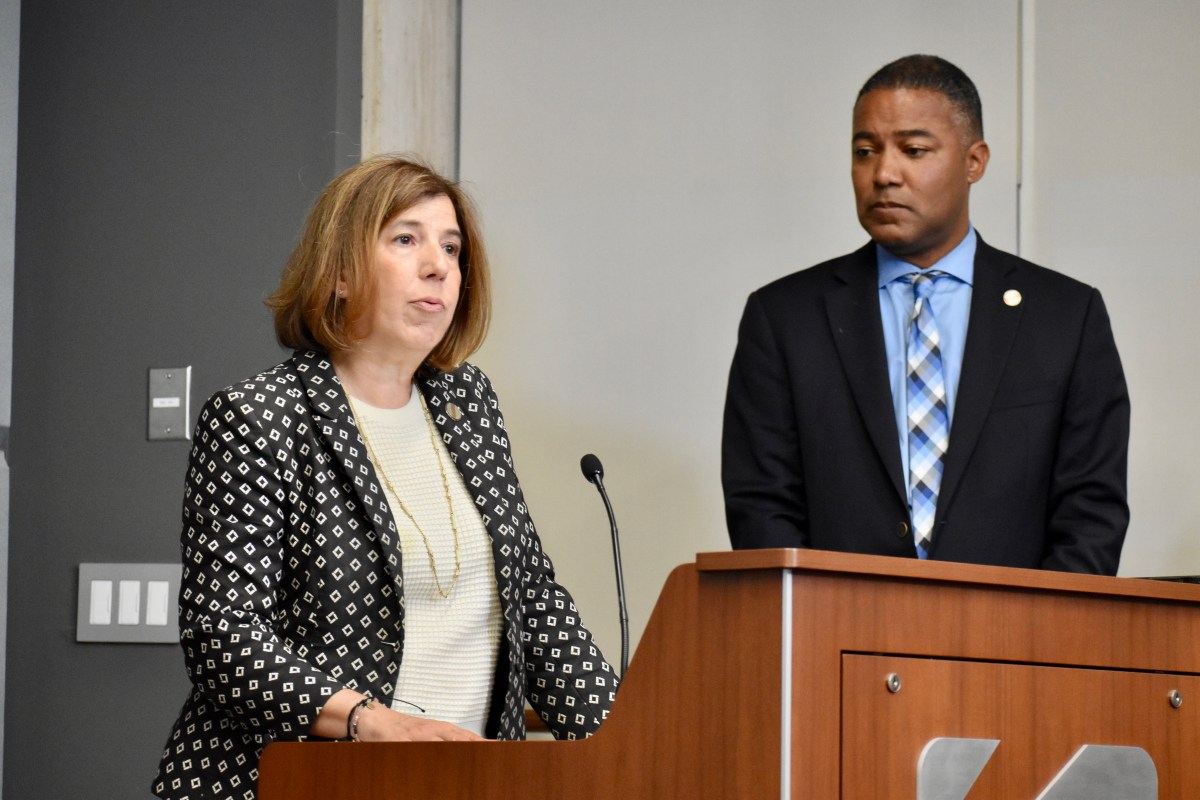GORIS, Armenia (AP) — Ruzan Israyelyan and her children spent days walking through forests in Nagorno-Karabakh and hiding from Azerbaijani drones as they fled for Armenia following Azerbaijan’s blitz offensive to reclaim control of the breakaway region.
A truck in the convoy of thousands of refugees carried the bodies of Israyelyan’s husband, brother and uncle for burial in Armenia. They died defending their village of Sarushen during the Azerbaijani attack last week.
“At the beginning of the attack, women and children hid in the upper part of the village,” the 35-year-old mother said. “The same night, we escaped by foot, running through the forests, while our men were left to defend the village.”
Israyelyan, her 8-year old son and her daughters aged 11 and 12, eventually found a car and drove to the regional capital of Stepanakert, where they spent two days outside with no food or spare clothes.
“After the blockade, my children were already malnourished,” she said, referring to the 9-month Azerbaijani blockade of the only road linking Nagorno-Karabakh with Armenia. “I could not find a single piece of bread for my children in Stepanakert for two days․ It was impossible to stay any longer. We managed to find a friend’s car, and somehow we squeezed into it.”
Some 28,000 people — about 23% of the population of Nagorno-Karabakh — have fled to Armenia since Azerbaijan’s swift military operation to reclaim the region after three decades of separatist rule. The mass exodus caused huge traffic jams. The 100-kilometer (60-mile) drive took as long as 20 hours.
Azerbaijan on Friday lifted the blockade of the road to Armenia — the Lachin Corridor — after separatist authorities agreed to lay down weapons and negotiate how to reintegrate the region.
“Sometimes the cars stopped for hours and didn’t move, we didn’t know the reason, but the first thought was about the road being closed again,” Israyelyan said. “Thank God we reached Armenia, and although I cannot imagine what will happen next, at least I know that my children’s lives are not in danger anymore.”
International Committee of the Red Cross volunteers provided refugees with food and medical assistance at a humanitarian station in Kornidzor, an Armenian village near the border. Armenian authorities offered temporary housing. Cars packed with refugees waiting to be allocated accommodation lined up in the nearby city of Goris.
Many accuse the Armenian government and Russian peacekeepers deployed to Nagorno-Karabakh of failing to prevent Azerbaijan from forcefully reclaiming the region.
Since a separatist war that ended in 1994, Nagorno-Karabakh has run its own affairs — without international recognition — under the control of ethnic Armenian forces backed by the Armenian military.
Azerbaijan regained substantial territory, including parts of Nagorno-Karabakh, in a six-week war with Armenia in 2020 that ended with a Moscow-brokered truce and the deployment of 2,000 Russian peacekeepers to monitor the region.
Russia, which has been Armenia’s main sponsor and ally since the 1991 Soviet collapse, has also sought to maintain friendly ties with Azerbaijan. But Moscow’s clout in the region waned as the war in Ukraine diverted Russian resources and made it increasingly dependent on Azerbaijan’s main ally, Turkey.
“Azerbaijan was shooting, but they were not doing anything,” Israyelyan said of the Russian peacekeepers.
Moscow has rejected the criticism of Russian peacekeepers, with Kremlin spokesman Dmitry Peskov saying Nagorno-Karabakh was “Azerbaijan’s internal business” and that Azerbaijan was “acting on its own territory, which was recognized by the leadership of Armenia.”
Azerbaijan’s swift takeover fueled more anger.
“The leaders of Azerbaijan, Russia, and Armenia are responsible for the forced migration of the people of Nagorno-Karabakh,” said Tatevik Khachatryana, a representative of the Mothers Support Center, a nongovernmental organization in Nagorno-Karabakh.
“All people in Stepanakert are in a desperate search for fuel,” Khachatryan said, as she waited for an opportunity to flee Stepanakert with her family. “Because of the 9-month blockade, there is almost no fuel left. People stay in lines for hours to get a small amount that is enough to pass the Lachin Corridor.”
A huge explosion at a crowded gas station near Stepanakert late Monday killed at least 68 people, injured 290 more, and left 105 people missing, the separatist government said. The blast happened as fleeing residents waited in line to fill up their tanks.
Khachatryan said her husband was able to find some fuel before the blast.
“We packed just a few clothes and took photos from the family album,” she said. “It’s too soon to talk about the future. First, we need to get out of here safely, as the corridor might close at any moment.”
Azerbaijani authorities have pledged to respect the rights of ethnic Armenians, but many do not trust that promise and fear reprisals for the three-decade separatist conflict.
The Azerbaijani government has sent text messages to Nagorno-Karabakh residents saying: “The right choice for you is to reintegrate into the Azerbaijani community.”
“This is not a choice but an imitation of one,” Khachatryan said. “In the case of real integration, you are not killed, beheaded, shot, or subjected to starvation. To say that you have a choice after this slaughter is a mockery.”
She expects few people to remain in Nagorno-Karabakh to live under Azerbaijani control. “Those who stay,” she said, “will be the ones who would rather be killed in their homeland than wander in uncertain exile.”
Thomas de Waal, a senior fellow at the Carnegie Europe think tank who has long followed the conflict, said he expected the majority to leave, citing “unbearable” living conditions and the demand to “integrate into Azerbaijan, a country that they’ve never been part of, and most of them don’t even speak the language.”
“We are talking about the loss of a place which has had a kind of substantial Armenian population and political autonomy, Armenian autonomy, for many centuries,” de Waal said.
Aspram Avanesyan, a 22-year-old journalist from Stepanakert, said many residents have burned the belongings that they can’t take with them.
“In the streets of Stepanakert, people are sitting on their bundles and waiting for any car to take them,” Avanesyan said.
Avanesyan, who was waiting for her family to arrive from the village of Berdashen so they can leave together, said she wished she could take all of her home and her grandmother’s grave with her. “We need to pack our whole life into one suitcase,” she said.




















